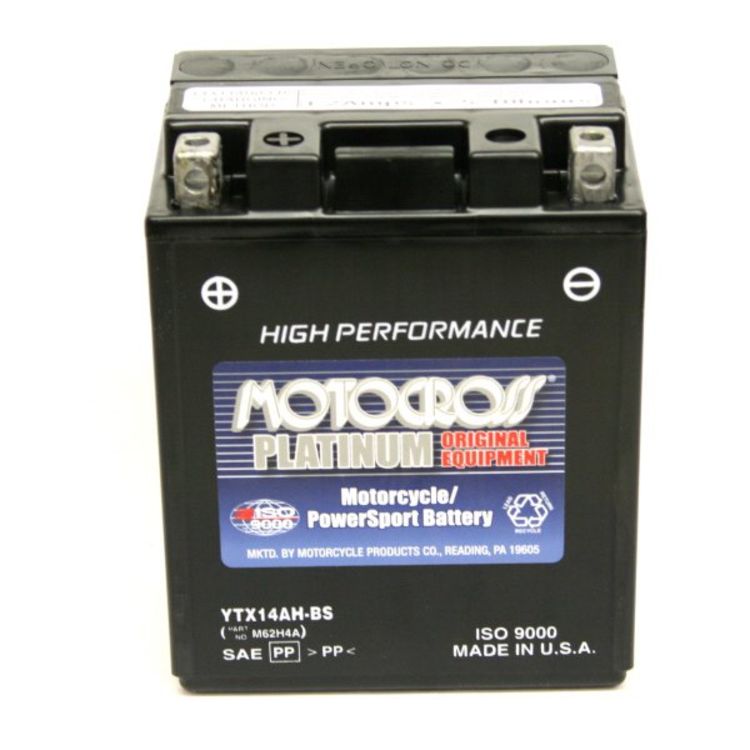When you’re in the market for a new ATV battery, you will notice that the batteries are labeled with various numbers and letters. While these markings seem confusing, it’s time well spent learning the basics of what they mean. These codes can tell you just about everything there is to know about any specific battery.
Page Contents
All batteries have a reference code that will tell you a lot of useful information about the battery, as long as you know how to read it.
Different types of batteries structure the reference code differently. This post covers conventional lead-acid batteries, high-performance conventional batteries, and AGM batteries.
If you want to learn more about ATV battery types, head over to this post.
To provide the most accurate information, we base this post on what Yuasa, as one of the major Powersports and ATV battery producers, tells us about the designation of battery type numbers.
We use the same example-codes as used by Yuasa in their battery application guide.
The letters at the beginning of the battery reference code tell you what series the battery belongs to.
Battery manufacturers produce various types of batteries that each offer unique features for that series of batteries.
As an example, we can look at the various series of high-performance Powersports AGM batteries offered by Yuasa:
YTZ Series
YIX Series
GYZ Series
YTX Series
Within each battery series, there is a range of battery models featuring different dimensions and Ah capacities to match all the various ATV models.
Note that several sources online state you can identify the battery manufacturer from the first letter of the battery reference code, but that is not correct. While it is true that Yuasa offers a YTX series of batteries, so does Mighty max and probably others. Any manufacturer is free to name their series of batteries as they want. Hence, the letters alone are not enough to provide an identification of which manufacturer made the battery.
This number indicates the power output of the battery. Within each series of batteries, you may find batteries with different performance classifications.
A higher number means higher power output. The battery of my Polaris Sportsman has a performance classification number of 20.
Not all manufacturers or batteries have this letter in their battery reference code. Those that do use it to designate a unique battery case size.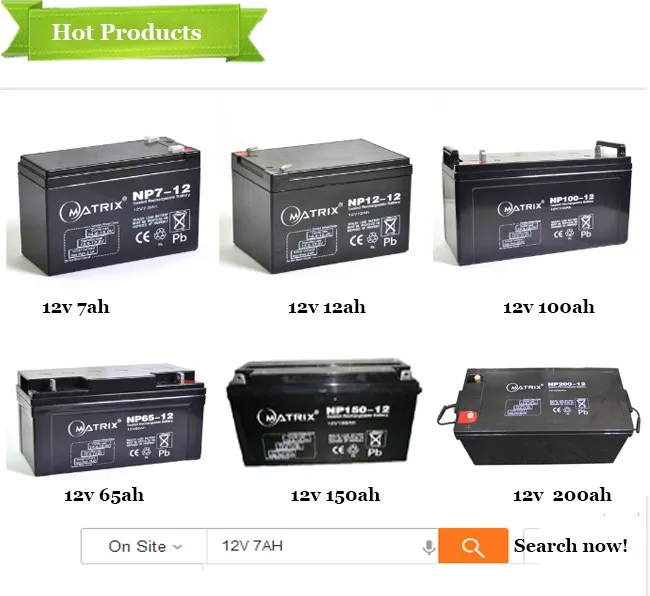
Batteries with the letter H in the code let you know it’s a higher CCA battery. According to Yuasa, their H-series of batteries offer up to 30% more cranking amps.
Yet again, not all batteries have this letter in their battery reference code. But when it’s there, it tells you the polarity location. L = Left, R = Right.
A battery typically leaves the factory either in the form of “factory activated” or “bottle supplied.”
A factory-activated battery is filled with electrolyte, sealed, and charged at the factory. It is ready to be put straight into use without any further action required by the buyer.
The remaining service life of a battery starts decreasing as soon as it is activated. Therefore you should put a FA battery in use within a specified period; it cannot be stored for too long.
Bottle supplied batteries leave the factory as a kit with one dry battery and the electrolyte in a separate plastic container.
The buyer needs to put the electrolyte fluid inside the battery to activate the battery according to the supplied instructions. The battery then needs to be charged.
Dry AGM batteries have a shelf life of 5 years as long as it remains properly sealed. As soon as the seal is broken, a dry battery must be filled with electrolyte and charged. Otherwise, the internal plates will begin to oxidize. This gradually reduces the battery’s capacity until it reaches a point where it can no longer take or hold a charge.
If you have a battery that won’t charge or you can’t get to hold a charge, you will find a complete troubleshooting guide over at this post.
Note that many sources online will tell you BS stands for Battery Sealed, but that is inaccurate. Yuasa batteries have provided the above definitions.
If the battery reference code ends with a number, it tells you that the battery has a unique terminal style.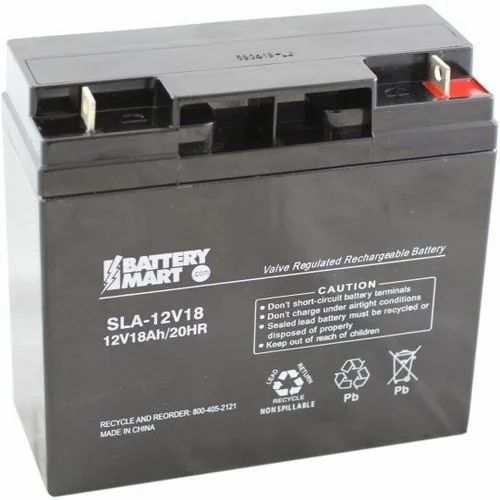 ATV and Powersports batteries come in 14 different terminal styles. It’s essential to get the right style that hooks up correctly with your bike’s connectors.
ATV and Powersports batteries come in 14 different terminal styles. It’s essential to get the right style that hooks up correctly with your bike’s connectors.
The nominal voltage tells you if you have a 6V, 12V, or 24V battery. It does not reflect the exact battery voltage, as it may vary slightly. A healthy 12V battery is typically 12.6V or higher under no load.
The N tells you it’s a conventional lead-acid battery.
The letters YB tells you it’s an high performance conventional battery.
The Battery Ah rating of a battery is typically labeled in a format like this: 18.9 Ah (20HR)
Ah is a unit where 1 Ah equals the charge transferred by a current of one ampere flowing for one hour.
A battery with an Ah rating of 18.9Ah (20HR) as the one in the picture means it can provide 18.9 Amps when discharged in 20 hours. It can provide 18.9A/20H = 0.945 Amps continuously for 20 hours.
Typically if a battery is loaded with a higher current, the battery capacity will decrease. The same battery as in the above example can only provide 18A when discharged in 10 hours. And if you added 18.9A of a draw on an 18.9Ah battery, it would not last 1 hour.
That’s why they add an “H” rating of typically 10H or 20H. It bumps up the battery’s Ah rating to a higher value.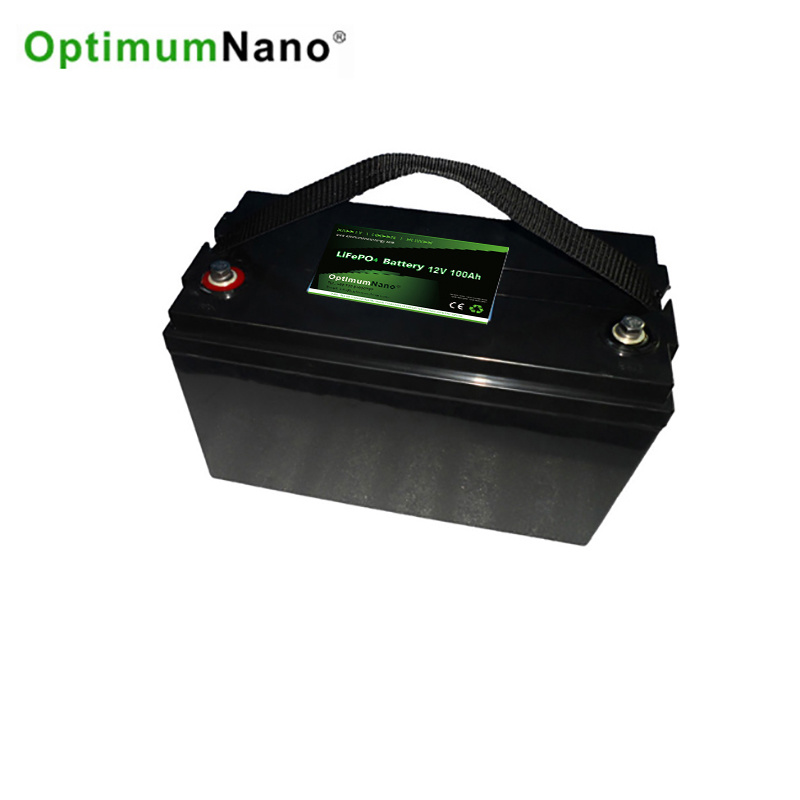
The CCA rating is a number that indicates the number of Amps (Amps = strength of an electric current) that a 12V battery can deliver at –18°C (0°F) for 30 seconds while maintaining a voltage of at least 7.2 volts.
ATV engines, just like most other engines, are harder to start in colder climates. If you ride in sub-zero temperatures, make sure your battery has an adequate CCA rating.
A battery with a higher CCA rating is better able to start the engine in cold temperatures.
All batteries have a label that indicates the nominal voltage. Most ATVs are 12V. If you put a 6V battery in a 12V ATV, it will not start.
SAE is short for the Society of Automotive Engineers. It tells you that the American standard was used to estimate the battery’s CCA rating. The American and European norm differs slightly.
[PP]>PP< tells you the battery casing was made with a polypropylene-polyethylene copolymer.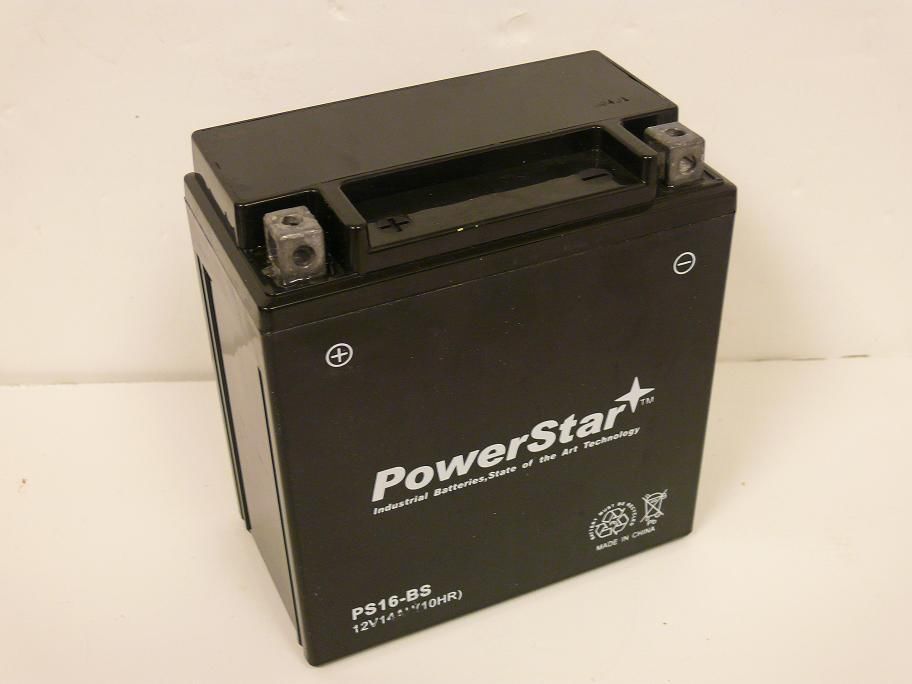
Some but not all batteries are marked with the proper charging currents.
Most chargers have settings that allow you to switch between lower charging currents for cold or standard charging or higher currents for a faster charging-cycle.
Never charge a battery at a higher rate than these ratings, as it may overcharge and possibly damage the battery. Head over to this post to learn how to charge any ATV battery properly.
Pb is the two-letter identifier for lead in the Periodic Table of Elements. This tells you how to recycle the battery after use properly.
ATV batteries are typically 10 Ah to 20 Ah. Larger engine displacements (cc) usually require a battery with more amps than smaller engines.
ATVs and quads usually require 12v batteries that are often suitable for use in motorcycles as well.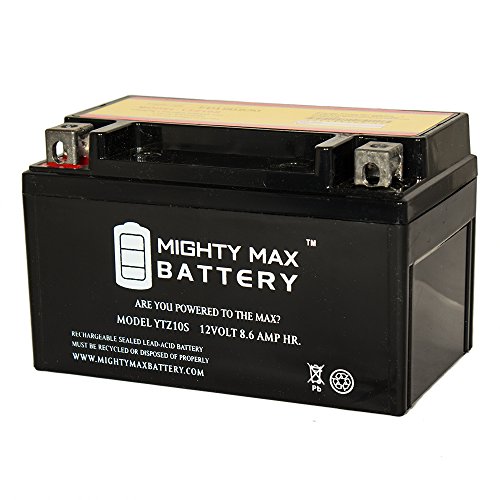 A power sports battery needs to provide the high output needed to start your four-wheeler. What differentiates these batteries is cold cranking amp, or CCA, output.
A power sports battery needs to provide the high output needed to start your four-wheeler. What differentiates these batteries is cold cranking amp, or CCA, output.
What is the best battery for an ATV? The final type of battery to consider for your ATV is a lithium battery. This is the newest and most specialized type of battery and with that comes a more substantial price tag. These batteries come pre-sealed and ready to charge and install.
How does an ATV charge its battery? An ATV uses what is called a stator system or magneto system to charge it’s battery. This is a fairly simple and robust system that’s located on the inside of the ATV’s engine. Any time the engine is running, the stator is continuously generating an electric charge. Some of the electricity is used to power the bikes different electrical components.
Can You charge an ATV with a quad? As long as your quad stays running, the battery should continue to charge through its charging system (known as a stator) unless there is more power being drawn from the battery than is being replenished. At this point, I know what you’re probably thinking, there has to be another way than having to jump my battery every time I want to use my ATV.
At this point, I know what you’re probably thinking, there has to be another way than having to jump my battery every time I want to use my ATV.
What is standard ATV battery? Standard ATV Battery Standard lead-core batteries use battery acid and are often what comes standard in your machine. These batteries will either come with the battery acid, or without. Since battery acid is fairly generic, you can buy the battery online without the acid, and save on the freight.
Table of Contents
If your battery is reading 0 volts, chances are the battery experienced a short circuit. If the battery cannot reach higher than 10.5 volts when being charged, then the battery has a dead cell. If the battery is fully charged (according to the battery charger) but the voltage is 12.5 or less, the battery is sulfated.
Lead Acid or Conventional. Lead acid batteries are the most common type of batteries. If you are thinking that ATV batteries are the same as car batteries, you are very mistaken. ATV conventional batteries, unlike most car batteries, take maintenance to make sure they are able to function and run properly.
If you are thinking that ATV batteries are the same as car batteries, you are very mistaken. ATV conventional batteries, unlike most car batteries, take maintenance to make sure they are able to function and run properly.
Reserve minutes, also called reserve capacity, is the number of minutes a fully charged battery can sustain a designated constant load — usually 25 amps — before it is fully discharged. For a 12-volt battery, that means battery voltage will have fallen to 10.5 volts.
What Size Battery Do I Need for my ATV or Quad? ATVs and quads usually require 12v batteries that are often suitable for use in motorcycles as well. A power sports battery needs to provide the high output needed to start your four-wheeler. What differentiates these batteries is cold cranking amp, or CCA, output.
Conventional, or flooded, ATV batteries use a voltage range of 12. 6 to 12.8 volts on a fully charged battery that’s at rest.
If the vehicle is equipped with a large number of non-standard electrical devices, which have an increased power consumption, e.g. a sophisticated sound system, the AGM battery provides the vehicle with the necessary power, which a conventional wet battery cannot provide.
12.6
The first digit from the left is a letter. It stands for the month of the year. A = January; B = February; C = March, etc. The second digit from the left is the year the battery was shipped from the factory.
– Battery Tender BTL14A240C Lithium Iron Phosphate Battery.
– ExpertPower 12V 7 Amp EXP1270 Rechargeable Lead Acid Battery.
– Yuasa YUAM620BH YTX20HL-BS Battery.
– YUASA YTX14-BS Maintenance Free Battery.
– Odyssey PC545 Powersports Battery.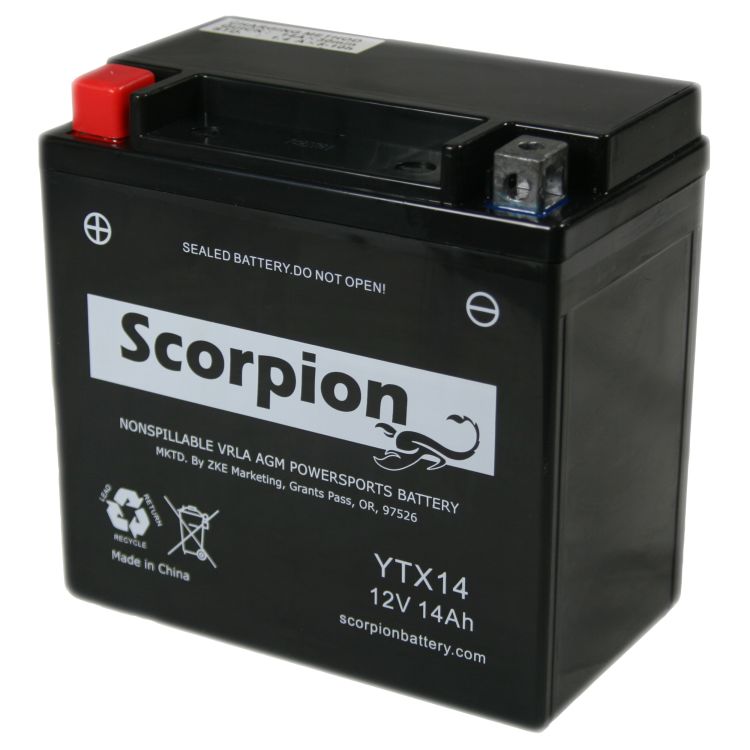
12.0 volts
Reserve capacity
2 amp
While Cold Cranking Amps (CCA) is important for starting engines, having higher Reserve Capacity (RC) helps power mobile devices, entertainment systems and in-vehicle Wi-Fi longer when the vehicle engine is off.
12 V
As an example of a numeric code, a common conventional battery size is 12N14-3A. The first number indicates the nominal voltage of the battery, which can be either a 6 for older 6 volt systems or 12 (as in the example) which indicates it is a 12 volt battery.
An AGM (absorbed glass mat) battery contains a special glass mat separator that wicks the electrolyte solution between the battery plates. This material’s design enables the fiberglass to be saturated with electrolyte – and to store the electrolyte in a “dry” or suspended state rather than in free liquid form.
This material’s design enables the fiberglass to be saturated with electrolyte – and to store the electrolyte in a “dry” or suspended state rather than in free liquid form.
– 1st digit – Voltage. 1-2 = 6 Volt Battery. 5-7 = 12 Volt Battery.
– 2nd & 3rd digits – Nominal capacity. 560 = 60Ah @ 20 hour rate. 660 = 160Ah @ 20 hour rate.
– 4th & 5th digits – The unique code number referencing battery performance and features.
2 amp
AGM or Absorbed Glass Mat ATV battery. AGM batteries are more ideal for off-road vehicles since there is no danger of spillage. Yes, AGM batteries are more expensive than conventional ATV batteries but you get a lot of useful features for the price. AGM batteries are also more durable and reliable.
ATV battery is an essential element without which the operation of the electrical system would be impossible.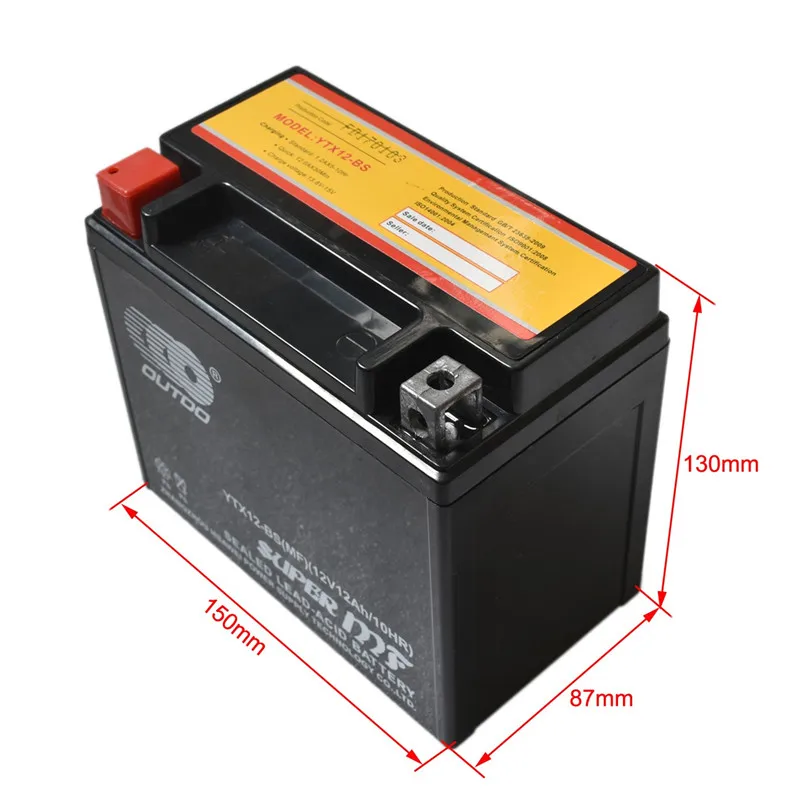 It is sometimes necessary to replace the standard battery immediately after purchasing the ATV because it does not meet the ATV's operating requirements. Also, after several years of active use of motorcycles, it may be necessary to buy a new battery for an ATV. In any case, the battery must meet a number of requirements.
It is sometimes necessary to replace the standard battery immediately after purchasing the ATV because it does not meet the ATV's operating requirements. Also, after several years of active use of motorcycles, it may be necessary to buy a new battery for an ATV. In any case, the battery must meet a number of requirements.
Contents
There are several general specifications that ATV batteries should have:
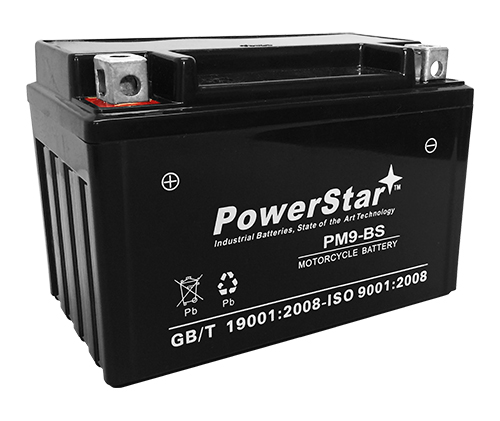 The starting current must be sufficient to start the ATV in difficult weather conditions.
The starting current must be sufficient to start the ATV in difficult weather conditions.
Some drivers purchase motorcycle batteries for ATVs to save money. However, not every battery in this category is suitable for ATVs. To choose the best option, you need to take into account a number of nuances. Only in this case the battery will function correctly. The specific features of ATV batteries are:
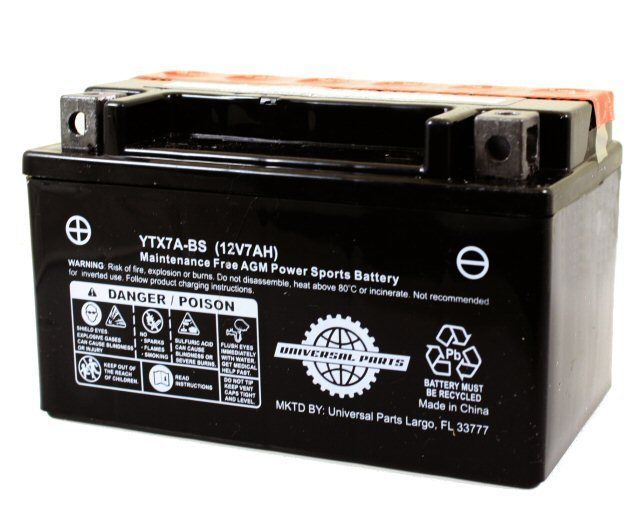 Therefore, the battery must be sealed so that the acid does not harm the owner of the equipment.
Therefore, the battery must be sealed so that the acid does not harm the owner of the equipment. In addition, the selected battery model must charge quickly. This increases the comfort of use, because you never know when you want to ride. After quickly charging the battery, you can go on a trip.
There are three main types of ATV batteries on the market today. Installed on devices:
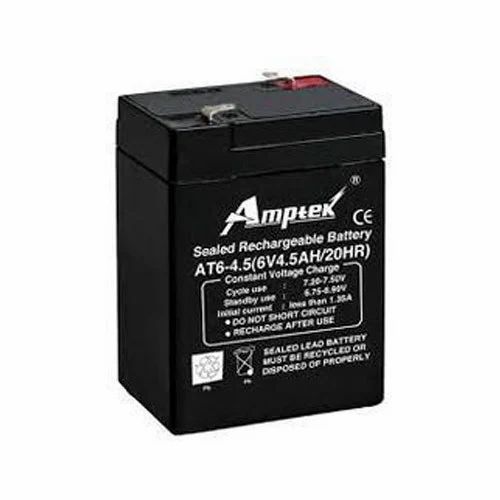 If necessary, the composition based on sulfuric acid is poured inside. These are leaky batteries, so it is not recommended to put them on an ATV.
If necessary, the composition based on sulfuric acid is poured inside. These are leaky batteries, so it is not recommended to put them on an ATV. Helium batteries are produced using different technologies. The most common in this category are AGM (Absorber Glass Mat) batteries. This is a relatively new technology that uses a thick substance as the electrolyte. This increases the safety of battery operation, since the gel does not leak out of the case.
For the first time, this technology was proposed by Bosch. Today, almost all manufacturers use it in the manufacture of batteries. The advantages of AGM batteries are:
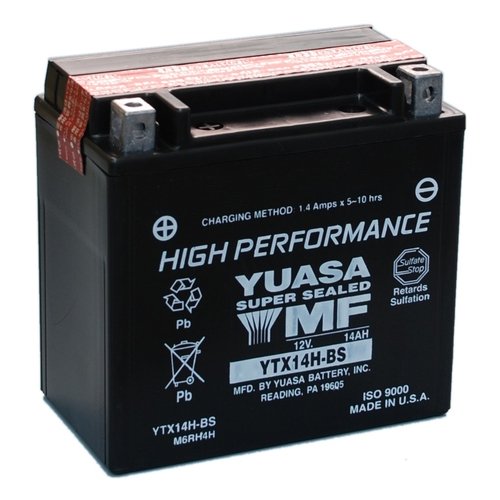
Such batteries also have disadvantages, but they are so minimal that they can be neglected. The tangible disadvantages include the high cost, in comparison with serviced batteries. But this disadvantage is fully compensated by a long service life.
Gel batteries do not tolerate critical discharge. Therefore, it is worth monitoring the charge level. Otherwise, it will be almost impossible to reanimate the battery. Modern technologies make it possible to create batteries that are resistant to deep discharge. Therefore, there should be no problems during operation.
ATV battery capacity must be selected according to engine size:

In some cases, the manufacturer installs very powerful motors with a volume of 1000 cm³ and above. In this case, you will need to purchase a 12 V 30 Ah battery for an ATV.
Terminal locations vary between ATV models. Therefore, it is necessary to choose it in accordance with the seat for the battery. If you choose and operate the battery correctly, in accordance with the recommendations described in the manufacturer's instructions, it will faithfully last more than one year.
Maxim Rogov / author of the article
Back in 2011, I got on a motorcycle for the first time and since then I have been addicted to motorsport. I love trying new bikes. I dream of a BMW F800GT and a motorcycle tour of Peru.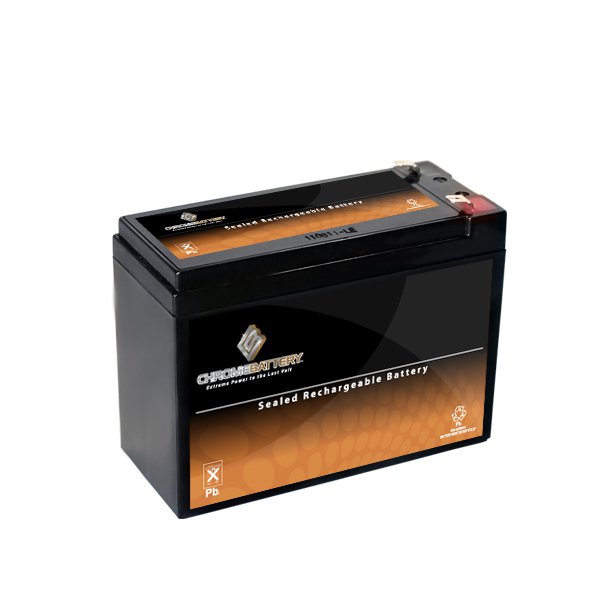
Much higher requirements are imposed on motor batteries than on the same car batteries. The tight layout and limited space place limits on their size. At the same time, the displacement of many motorcycle engines is very serious, and to start them from a battery, an appropriate energy output is required. Plus, constant exposure to increased levels of vibration and shaking, and in some cases - regular work in an inclined position and frequent falls. Therefore, the design of motor batteries has specific design features and does not cease to be improved.
Consider modern varieties of motor batteries using the example of products of the Japanese company Yuasa and the Italian company Unibat , whose range most fully covers the needs of a wide variety of motor vehicles.
Standard lead acid motor batteries of traditional design.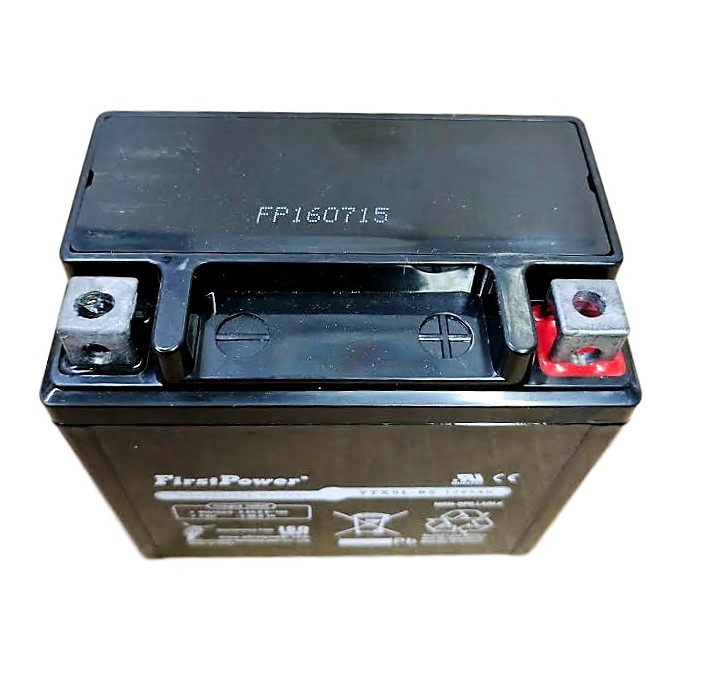 Manufactured by Yuasa and Unibat marked 12N for 12V and 6N for 6V batteries. They belong to the Standard SLI (Starting, Lighting and Ignition) category - a standard battery for starting the engine, ensuring the operation of the ignition and lighting. Such batteries, although they are called ordinary, but being motorcycle batteries, are somehow designed for a certain moderate level of shaking and vibration. As a rule, they are produced in a white polypropylene case with a black top and colored filler caps. Execution leaky - with a gas outlet channel. Dry charged. Before starting operation, it is necessary to fill with electrolyte, after which, after 30-60 minutes, the battery is ready for operation. Require regular monitoring of the electrolyte level and removal of caps when recharging.
Manufactured by Yuasa and Unibat marked 12N for 12V and 6N for 6V batteries. They belong to the Standard SLI (Starting, Lighting and Ignition) category - a standard battery for starting the engine, ensuring the operation of the ignition and lighting. Such batteries, although they are called ordinary, but being motorcycle batteries, are somehow designed for a certain moderate level of shaking and vibration. As a rule, they are produced in a white polypropylene case with a black top and colored filler caps. Execution leaky - with a gas outlet channel. Dry charged. Before starting operation, it is necessary to fill with electrolyte, after which, after 30-60 minutes, the battery is ready for operation. Require regular monitoring of the electrolyte level and removal of caps when recharging.
Yuasa YuMicron motorcycle batteries are designated YB (similar Unibat batteries are designated CB).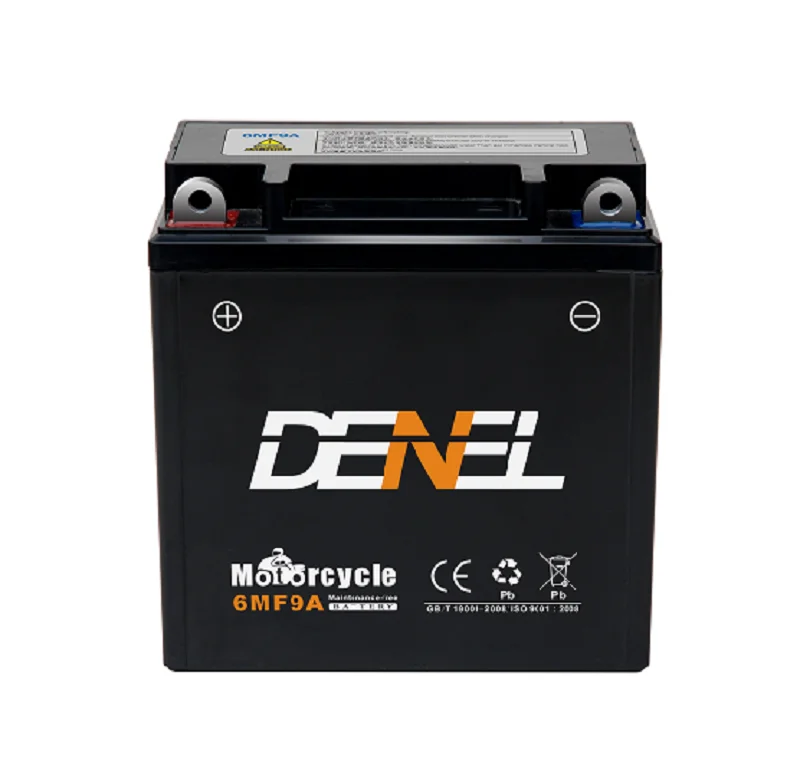 Improved battery design with more plates. They have increased vibration resistance due to the use of high-strength glass separators. The lower internal resistance guarantees a cold starting current approximately 30% higher than conventional batteries. Operating rules are similar to conventional batteries.
Improved battery design with more plates. They have increased vibration resistance due to the use of high-strength glass separators. The lower internal resistance guarantees a cold starting current approximately 30% higher than conventional batteries. Operating rules are similar to conventional batteries.
Yuasa YuMicron CX motorcycle batteries ( in the Unibat line are designated CB-CX) - batteries based on lead-calcium technology. They are focused on large motor vehicles with increased requirements for cold starting current, as a rule - on snowmobiles. In addition to increased energy efficiency, lead-calcium technology significantly reduces battery self-discharge and electrolyte evaporation, which allows for extended maintenance intervals and battery life. Operating rules are similar to conventional batteries.
Moto Batteries for motorcycles Yuasa YTX, YT (according to Unibat classification - CBTX, CT) - maintenance-free lead-calcium batteries built using AGM (Absorbed Glass Mat) technology and contain, in addition to lead plates and conventional separators, a special absorbent fiberglass material that "binds" the electrolyte.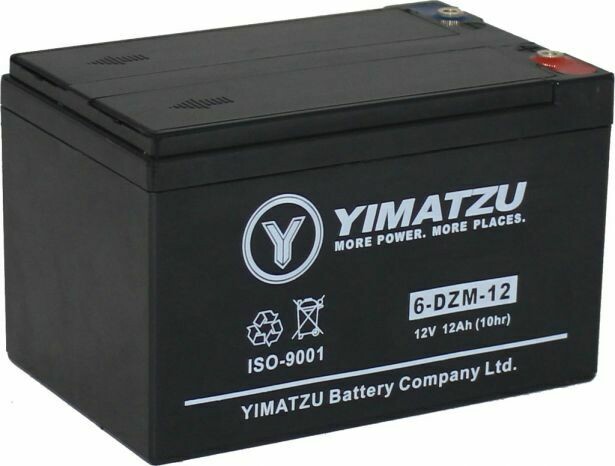 Such batteries have a sealed design with a VRLA (Valve Regulated Lead Acid) valve system to release the emitted gases, eliminating the leakage of acid. Often this type of battery is called "gel", although in this case it is not correct, since the electrolyte, in principle, remains liquid, while real gel batteries do have a jelly-like electrolyte.
Such batteries have a sealed design with a VRLA (Valve Regulated Lead Acid) valve system to release the emitted gases, eliminating the leakage of acid. Often this type of battery is called "gel", although in this case it is not correct, since the electrolyte, in principle, remains liquid, while real gel batteries do have a jelly-like electrolyte.
Thanks to the technologies AGM and VRLA , the battery type YTX has a number of advantages over the classic ones:
- Maintenance-free during normal use. After filling the electrolyte at the beginning of operation, subsequently it is not required to check its level and top up, and the subsequent opening of the battery is generally prohibited.
- Sealed, valve regulated design to prevent acid leakage and possible terminal corrosion. Due to the tightness of the housing also it is possible to install the battery in various positions (but bottom-to-top installation is not recommended) and safety is ensured in case of equipment falling and overturning, which is important for sports applications in general and motorsports in particular.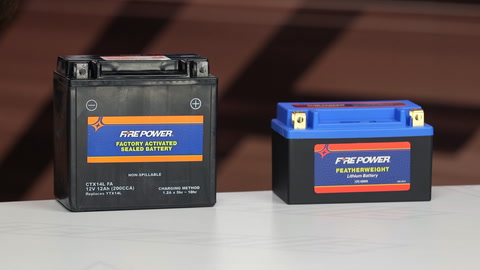
- High starting current at cold start and at low temperatures.
- Extremely low self-discharge rate during long-term parking of equipment, for example, when storing equipment in the off-season.
- High vibration resistance, which eliminates such phenomena as "shedding of plates" and, accordingly, increased service life.
With all its advantages, YTX batteries are extremely sensitive to excess charging voltage and are afraid of full discharge . For recharging it is necessary to use a special charger for motorcycle batteries , which can correctly charge small batteries. With the correct charging mode, gas formation and, accordingly, the risks of battery swelling, explosion, etc. are almost completely eliminated. You should not leave the battery in the off-season for storage in the cold and bring it to a full discharge, as this may subsequently affect the decrease in its capacity.
Motorcycle batteries Yuasa YTZ (Unibat - CTZ) is an improved design of maintenance-free motorcycle batteries with an increased number of plates and a radial grid structure, combining all the features of YTX batteries with an even higher cold cranking current and improved vibration resistance. For individual battery sizes, with the same capacity as YTX, the maximum starting current can be 30% higher. Most Yuasa YTZ battery models are shipped from the factory pre-charged and ready to use immediately.
For individual battery sizes, with the same capacity as YTX, the maximum starting current can be 30% higher. Most Yuasa YTZ battery models are shipped from the factory pre-charged and ready to use immediately.
Yuasa GYZ motorcycle batteries are the latest development of Yuasa, just starting its journey in the motor market. A key feature is the increased area of the plates, which occupy more usable space inside the battery. New housing with built-in recesses for easy transport of the battery. Improved universal terminals with built-in brass nuts. Available in sizes from 16 to 32 Ah and cold starting current from 240 to 500A. Designed for use in large-capacity V-Twins, touring motorcycles and ATVs.
YTX (CBTX) and YTZ (CT, CTZ) batteries are now the de facto standard in the motorcycle industry and are used almost everywhere from scooters to luxury tourers due to their high performance. It is they that are equipped with the vast majority of motorcycles and scooters that come off the assembly line, and it is they who should be guided in the first place if you need to buy a motor battery. Even if you have a fairly old motorcycle, in the specifications for which its manufacturer recommends a conventional battery, when replacing it, you should pay attention to whether there is a more modern maintenance-free analogue from the YTX series that is suitable in terms of capacity, dimensions and terminal arrangement.
Even if you have a fairly old motorcycle, in the specifications for which its manufacturer recommends a conventional battery, when replacing it, you should pay attention to whether there is a more modern maintenance-free analogue from the YTX series that is suitable in terms of capacity, dimensions and terminal arrangement.
The reverse replacement of modern motorcycle batteries with simpler types is categorically unacceptable due to the much greater saturation of modern motorcycles with sensitive and power-demanding electrical equipment: electronic injection systems, ABS, etc., as well as for reasons of battery location on a motorcycle and vibration load.
The most detailed, up-to-date and reliable information about the dimensions, capacity, type, terminal location, as well as the applicability of a particular battery model to a particular model of motorcycle and ATV, is available on the websites of manufacturers
We give here only a brief decoding of the designations of motor batteries, using Yuasa as an example.